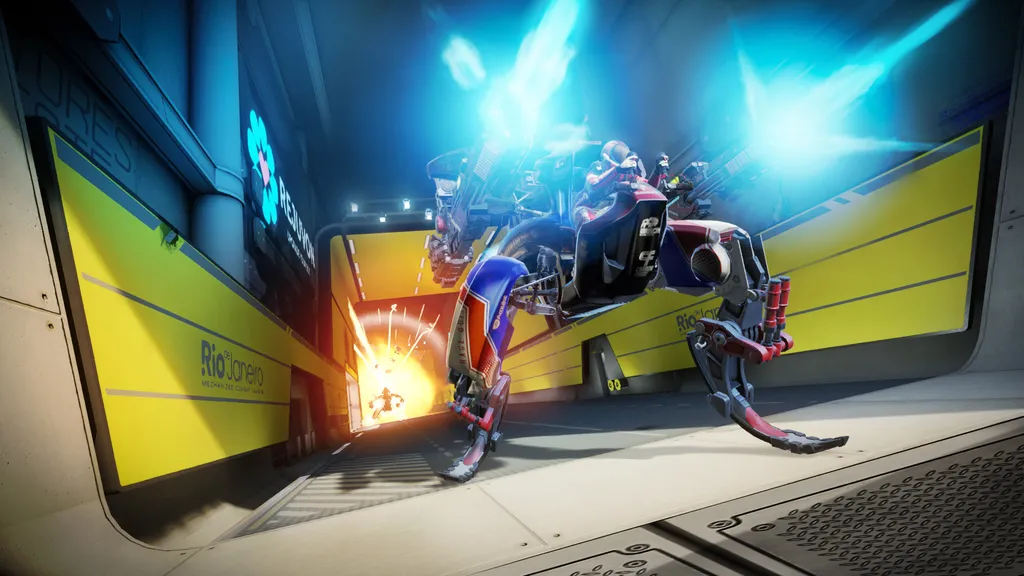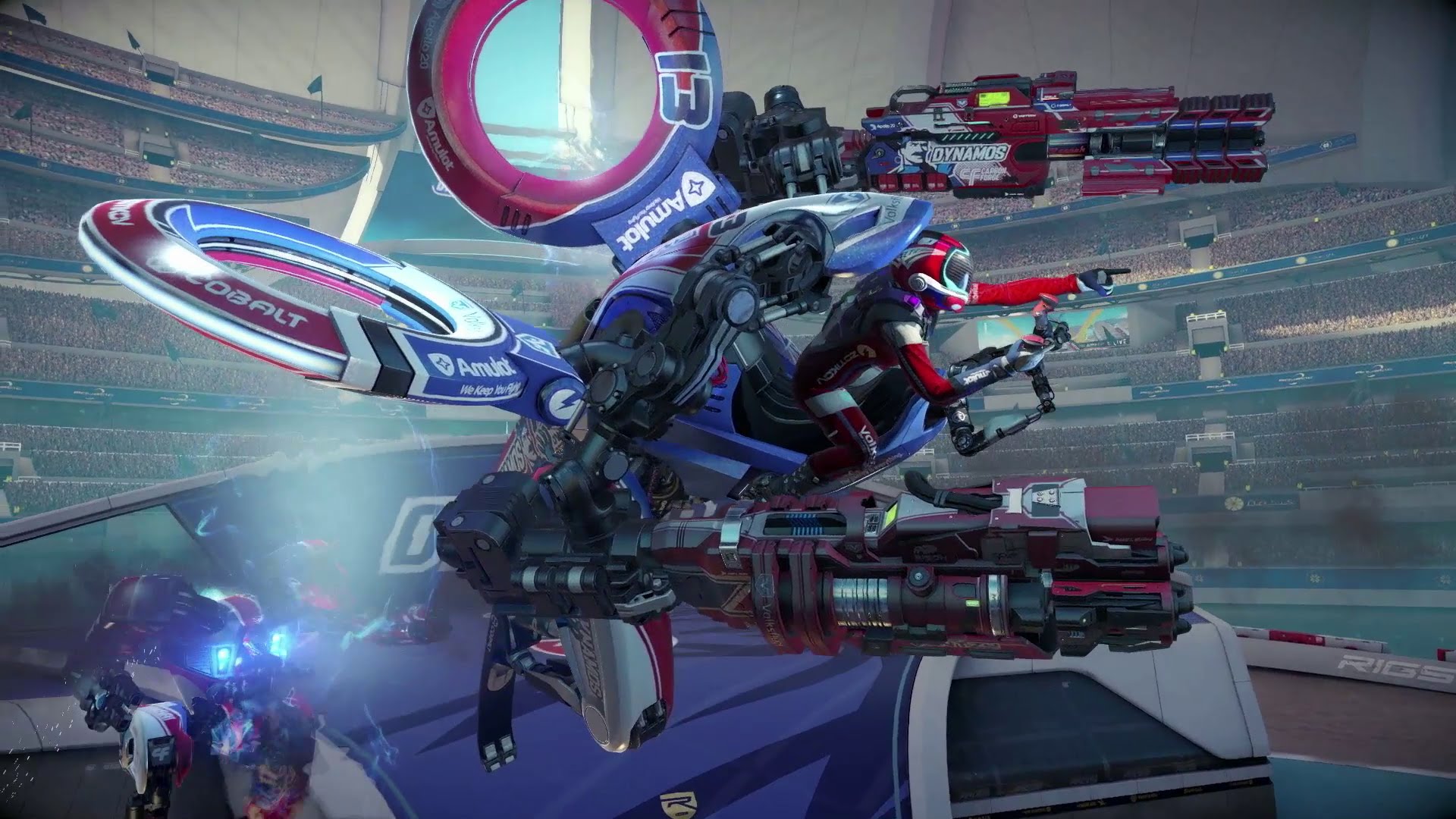The VR community was hit with quite a shock yesterday. Guerrilla Cambridge, the Sony-owned developer behind PlayStation VR multiplayer FPS, RIGS: Mechanised Combat League [Review: 8/10], was confirmed to be closing just a few months on from the game’s launch last October.
Needless to say, shutting the doors to the studio behind one of the biggest titles on the new hardware comes as a big surprise. RIGS might not have exactly been the new Call of Duty, but it was one of the better reviewed games among Sony’s launch line-up and one of the two full gamepad-based FPS games to hit the headset, the other being World War Toons. In our 2016 VR Game of the Year Awards, we named RIGS our PS VR Game of the Year.
Initially it had been assumed that Cambridge was about to embark upon a lengthy DLC roll out plan for the game, which would have kicked off with December’s Winter Update, but it looks like that may not be the case any longer. DLC might not be dead entirely (Sony didn’t respond to our questions about if it could continue), but it won’t be Cambridge making it.
Studio closures are an unfortunate part of the games industry, but this is the first time we’ve seen a developer behind a high-profile VR game shut down. That makes this news all the sadder; Cambridge was one of the pioneers of a new industry and it’s closing its doors far too early as far as we’re concerned, even considering its 19-year history. But the UK studio did take some important steps for the early days of VR with its lone HMD release, and it’s only right that we don’t forget them.
I was one of the first people to play RIGS following its reveal at E3 2015. In fact, it was the first thing I tried out at that year’s show, heading straight for it as soon as the expo hall doors opened. It occupied the entire second floor of a massive structure at Sony’s booth.
What struck me about the game was just how refined it was, even almost a year and a half away from launch. Developing gamepad-based FPSs for VR is a risky business considering the potential for motion sickness, but here was a developer that was bullish on its ability to create a comfortable experience, and trusting enough in players that they could handle it.
And they pulled it off.
That’s the most important thing RIGS did for VR; it proved you could have frantic, fast-paced multiplayer shooter action in the here and now, defying expectations. Rooting players in a walking mech gave a sense of authenticity to their movements, as their character wasn’t actually moving their legs, just comfortably sitting inside those metal frames, much like the player was just sitting on a chair in real life. Granted RIGS wasn’t free from comfort issues, but Cambridge’s novel foundation is something that more developers should pay attention to when looking at design and circumventing sickness.
You can’t overstate the wonders this did for PS VR’s launch line-up. Without RIGS, we’d have very little solid proof that the headset could handle non-flight shooters with this kind of ambition. Now as we look out to 2017, it’s one of the reasons we’re expecting such big things for PS4 VR.
A big part of its appeal was also accessibility. Every time I’ve jumped into the game I’ve found myself slipping back into the controls with ease, where I had previously been worried they’d overwhelm me. Cambridge made the most of combining a traditional shooter control scheme with the new features of VR. You could move and steer with your head, for example, but you could also stick to the classic joystick layout.
But RIGS didn’t just settle from successfully translating an FPS into VR, it also taught us that innovation in mechanics will be still key to pushing the genre forward in VR just as much as it is for standard displays. Rather than forcing you to lock an eye to your iron sights and have you creep around corners, RIGS embraced the arena shooter. It featured a wide aiming reticle that made it hard to miss and gave the action a snappy pace, dual-wielding weapons had you pressing the attack, and special abilities forced you to use strategy in firefights. It would have been all too easy to imitate contemporary shooters and chase some of the Call of Duty and Battlefield pie, but RIGS instead set itself apart. How many other shooters have a game mode where you need to throw yourself through a goal zone?
Cambridge made a mark on production values, too. At a time when we weren’t quite sure if Sony’s console could really provide VR experiences that measured up to what we’ve been seeing on the Oculus Rift and HTC Vive, here was a rock solid game with sharp visuals, a stunningly vivid color palette, and an unflinching 60 FPS framerate reprojected into 120FPS.
I also have a lot of admiration for RIGS‘ determination to steer clear of VR violence. It’s a rare shooter with a family-friendly, televised-sport tone. The Mechanized Combat League is a futuristic (sadly fictional) sport after all, and Cambridge used this to put a positive spin on the action. Instead of feeling like an action hero, the cheers of the crowd and cries from the commentator made you feel like a team player. Shooting guns might not be the most enlightened use of VR, but here’s a game that at least does it in a tasteful way.
Guerrilla Cambridge’s demise marked a sad day for the VR industry. This was a team that had made a very good first impression with its first game, and I’ll forever be wondering what might have happened if it had had the chance to make a second. While the studio might be gone, the impact it made with RIGS means I, for one, certainly won’t forget it any time soon. How Sony fills that gap it’s just created in its experienced VR teams will be interesting to see.



























